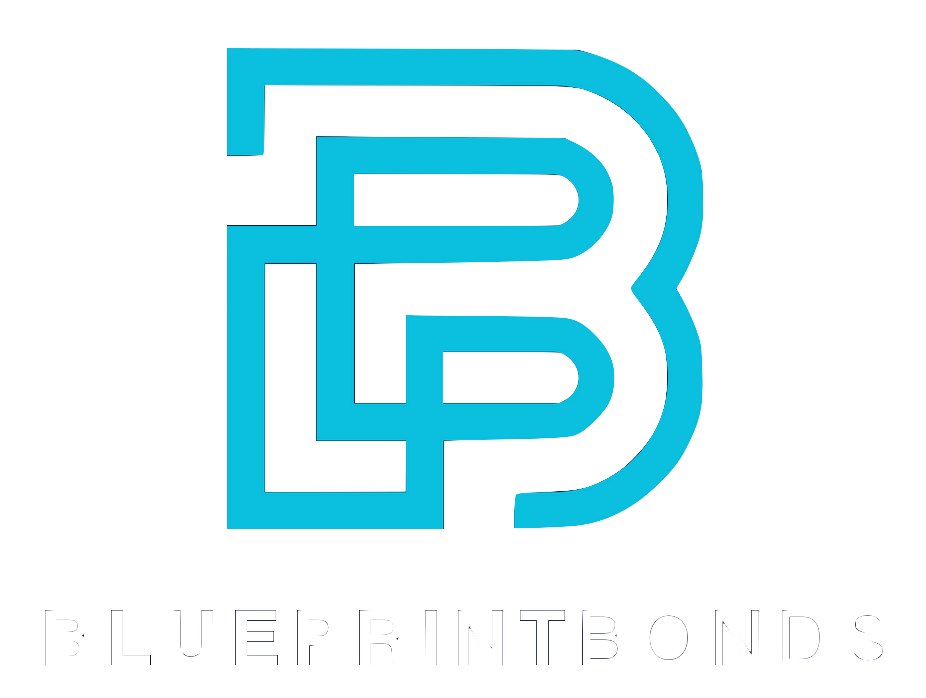Artificial Intelligence (AI) is revolutionizing industries across the globe, and the insurance sector is no exception. One of the most transformative impacts of AI is on underwriting—the process insurers use to evaluate risk and decide whether to offer coverage and at what price. With AI-driven technologies, underwriting is becoming faster, more accurate, and increasingly personalized, reshaping how insurers operate and how customers experience insurance.
According to the ZipDo Education Reports 2025, AI-driven underwriting can reduce processing times by up to 50%, a game-changer in an industry traditionally known for lengthy evaluations. This article explores how AI is reshaping underwriting decisions, the benefits and challenges of this transformation, and what the future holds for insurers and policyholders alike.
The Evolution of Underwriting: From Manual to Machine Learning
Underwriting has historically been a labor-intensive process relying heavily on human judgment, manual data collection, and standardized risk models. While effective to an extent, this approach often resulted in slower turnaround times and less precise risk assessments.
AI and machine learning models have introduced a new era of underwriting by automating data analysis and enabling more nuanced risk evaluations. Machine learning algorithms analyze vast amounts of data—from medical records to driving habits—to identify patterns and predict risk more accurately than traditional methods. This shift has led to a reported 30% improvement in risk assessment accuracy, as highlighted in the WifiTalents Reports 2025.
By integrating AI, insurers can process applications faster and with greater confidence, reducing human error and bias. This evolution is not just about speed but also about enhancing the quality of underwriting decisions, which ultimately benefits both insurers and customers.
Moreover, the implementation of machine learning in underwriting has enabled insurers to leverage alternative data sources that were previously underutilized or ignored. For instance, social media activity, online behavior, and even geolocation data can now be factored into risk assessments. This broader data spectrum allows for a more holistic view of potential policyholders, leading to personalized insurance products that cater to individual needs. As a result, customers can enjoy tailored coverage options that reflect their unique lifestyles and risk profiles, fostering a more customer-centric approach in the insurance industry.
Additionally, as machine learning algorithms continue to learn and evolve, they can adapt to emerging trends and shifts in consumer behavior. This adaptability is crucial in a world where risks are constantly changing due to factors such as climate change, technological advancements, and shifting societal norms. Insurers that embrace this technology not only enhance their competitive edge but also position themselves as forward-thinking entities that prioritize innovation and customer satisfaction. The future of underwriting, therefore, looks promising, with the potential for even greater efficiencies and improved risk management strategies on the horizon.
Efficiency Gains Through AI-Driven Underwriting
One of the most immediate advantages of AI in underwriting is the dramatic reduction in processing times. AI systems can analyze complex datasets and generate underwriting decisions in a fraction of the time it takes human underwriters. This efficiency gain is crucial in a competitive market where customers expect quick responses.
Studies indicate that AI-driven underwriting can cut processing times by up to 50%, allowing insurers to handle more applications without compromising quality. Additionally, AI can reduce underwriting costs by up to 30%, making the process more cost-effective for insurance companies. These improvements are supported by findings from the ZipDo Education Reports 2025.
Faster underwriting means quicker policy issuance and improved customer satisfaction. It also enables insurers to allocate human resources to more complex cases where human judgment is indispensable, creating a more balanced and efficient workflow.
Moreover, AI's ability to continuously learn and adapt enhances its decision-making capabilities over time. By leveraging machine learning algorithms, AI systems can identify patterns and trends in underwriting data that may not be immediately apparent to human underwriters. This not only leads to more accurate risk assessments but also helps in predicting potential claims, allowing insurers to proactively manage their portfolios. As a result, companies can better tailor their products to meet the evolving needs of their customers, ultimately leading to increased market share.
Furthermore, the integration of AI into underwriting processes can significantly improve compliance and risk management. AI systems can be programmed to adhere to regulatory requirements and flag any inconsistencies or anomalies in applications, reducing the likelihood of human error. This level of scrutiny not only safeguards the insurer's interests but also builds trust with clients, who can feel assured that their applications are being processed with the utmost diligence and care. As the insurance landscape continues to evolve, the role of AI in underwriting is set to become increasingly pivotal, driving innovation and enhancing operational excellence.
Enhancing Risk Assessment Accuracy
Accurate risk assessment is the cornerstone of effective underwriting. AI enhances this by leveraging machine learning models that continuously learn from new data, improving their predictive capabilities over time. This dynamic learning process helps insurers identify subtle risk factors that might be overlooked by traditional methods. For instance, AI can analyze vast datasets, including social media activity, online behavior, and even geographic data, to uncover correlations that human underwriters may not easily perceive. This holistic approach to data analysis enables a more nuanced understanding of risk, which is crucial in today's fast-paced insurance landscape.
More than half of insurers—55%—have reported increased accuracy in risk assessment after deploying AI models, according to the ZipDo Education Reports 2025. This improvement not only reduces the likelihood of underwriting losses but also enables more competitive pricing and tailored policy offerings. Furthermore, as AI systems evolve, they can adapt to emerging trends and shifts in consumer behavior, ensuring that insurers remain agile and responsive in a constantly changing market environment. The integration of real-time data feeds allows for immediate adjustments to risk assessments, which is particularly beneficial in sectors like health insurance, where patient data can fluctuate rapidly.
By refining risk profiles, AI allows insurers to better differentiate between high and low-risk applicants. This precision supports the development of personalized insurance products that meet individual customer needs more effectively. For example, insurers can offer discounts or incentives for clients who demonstrate proactive risk management behaviors, such as maintaining a healthy lifestyle or investing in home security systems. Additionally, AI-driven insights can help insurers anticipate potential claims before they occur, enabling them to engage with customers proactively and mitigate risks before they escalate. This forward-thinking approach not only enhances customer satisfaction but also fosters long-term loyalty, as clients appreciate the tailored service and attention to their unique circumstances.
Personalization: The Future of Insurance Products
AI is a key enabler of personalized insurance products, which are rapidly becoming the industry standard. Traditional underwriting often relies on broad categories and generalized risk pools, but AI’s ability to analyze individual-level data allows for much more customized coverage options.
Approximately 80% of insurers believe AI will be fundamental in enabling personalized insurance products by 2025, as reported by the ZipDo Education Reports 2025. Personalized underwriting can take into account lifestyle factors, real-time behavior, and other unique data points to tailor premiums and coverage more fairly and accurately.
This shift benefits consumers by offering policies that better match their risk profiles and needs, often at more competitive prices. For insurers, personalization drives customer loyalty and opens new market opportunities.
Moreover, the integration of AI into the insurance sector allows for dynamic pricing models that can adjust in real-time based on a customer's behavior. For instance, a driver who consistently practices safe driving habits could see their premiums decrease, while those who engage in riskier behaviors might face higher costs. This not only incentivizes safer choices but also fosters a sense of accountability among policyholders, leading to a more engaged customer base.
Furthermore, the use of AI in personalization extends beyond just auto or health insurance; it encompasses a wide array of products, including home and life insurance. Insurers can analyze data from smart home devices, wearable technology, and even social media activity to create comprehensive profiles that reflect an individual's lifestyle and preferences. This holistic approach not only enhances the relevance of the coverage offered but also empowers consumers to make informed decisions about their insurance needs, ultimately transforming the way they interact with their insurers.
AI Integration in Claims Processing and Its Impact on Underwriting
Claims processing is closely linked to underwriting, as claims history informs risk assessment and pricing decisions. AI’s role in automating claims processing has also contributed to changes in underwriting practices.
More than half of insurers—55%—have already integrated machine learning techniques into their claims processing systems, enhancing efficiency and accuracy, according to the ZipDo Education Reports 2025. AI-driven claims automation reduces processing time by up to 50%, speeding up settlements and improving customer satisfaction.
The data generated through AI-enhanced claims systems feeds back into underwriting models, providing richer insights into risk factors and claim patterns. This continuous feedback loop helps insurers refine their underwriting criteria and improve risk prediction over time.
Moreover, the integration of AI in claims processing allows for real-time data analysis, enabling insurers to identify emerging trends and anomalies that may not have been evident through traditional methods. For instance, AI algorithms can analyze vast datasets to detect fraudulent claims more effectively, thus protecting insurers from potential losses. This proactive approach not only safeguards the insurer's bottom line but also fosters a more trustworthy relationship with policyholders, as claims are handled with greater scrutiny and fairness.
Additionally, the use of AI in claims processing is paving the way for personalized insurance products. By leveraging insights gained from claims data, insurers can tailor their offerings to meet the specific needs of different customer segments. This customization not only enhances customer engagement but also allows insurers to price their products more accurately, aligning premiums with the actual risk presented by each individual or entity. As a result, both the insurer and the insured benefit from a more balanced risk-sharing model, which is crucial in today’s competitive insurance landscape.
Challenges and Considerations in AI-Powered Underwriting
Despite the clear benefits, integrating AI into underwriting is not without challenges. Data privacy and security are paramount concerns, as underwriting relies on sensitive personal information. Insurers must ensure compliance with regulations and maintain customer trust. This involves implementing robust cybersecurity measures and regularly updating protocols to safeguard against data breaches. Additionally, organizations must educate their employees about data handling practices, fostering a culture of privacy awareness that permeates every level of the organization.
There is also the risk of algorithmic bias if AI models are trained on incomplete or unrepresentative datasets. This can lead to unfair underwriting decisions, which insurers must actively guard against through rigorous model validation and transparency. To combat this, insurers are increasingly adopting practices such as diverse data sourcing and continuous monitoring of AI outcomes to identify and rectify biases. Engaging with external auditors and stakeholders can also enhance accountability and ensure that the AI systems are functioning as intended and serving all demographics fairly.
Moreover, while AI can automate many tasks, human oversight remains essential, especially in complex or borderline cases. The goal is to strike a balance where AI supports underwriters rather than replaces them entirely. This hybrid approach not only leverages the efficiency of AI but also retains the nuanced judgment that experienced underwriters bring to the table. Training programs that enhance the skills of underwriters in interpreting AI-generated insights can further bridge the gap between technology and human expertise, ensuring that both work in tandem to improve decision-making processes.
Furthermore, the implementation of AI in underwriting necessitates a cultural shift within organizations. Employees may initially resist adopting new technologies due to fears of job displacement or a lack of understanding of AI's capabilities. To address these concerns, insurers should focus on transparent communication about the role of AI, emphasizing its potential to enhance job functions rather than eliminate them. Workshops and collaborative sessions can be instrumental in demystifying AI, allowing underwriters to see firsthand how technology can streamline their workflows and empower them to make more informed decisions.
The Growing Market and Future Outlook
The global AI in insurance market is projected to grow at a compound annual growth rate (CAGR) of 25% through 2027, reflecting widespread adoption and ongoing innovation in this space, as noted in the ZipDo Education Reports 2025. This growth is driven by the increasing demand for efficiency, accuracy, and personalization in underwriting and claims processing. Insurers are increasingly recognizing that AI can streamline operations, reduce costs, and enhance customer satisfaction, leading to a more agile and responsive business model.
Looking ahead, AI is expected to further disrupt traditional underwriting processes, with 55% of surveyed insurance executives anticipating significant changes by 2025, according to the Gitnux Report 2025. Innovations such as explainable AI, real-time data integration, and advanced predictive analytics will continue to enhance underwriting capabilities. Furthermore, the integration of machine learning algorithms allows insurers to analyze vast datasets, identifying patterns and trends that were previously undetectable, thus enabling more informed decision-making and risk assessment.
As AI technologies mature, insurers that effectively leverage these tools will gain a competitive edge by offering faster, more accurate, and more personalized underwriting solutions, ultimately transforming the insurance landscape. Additionally, the role of AI in fraud detection is becoming increasingly critical, with systems capable of analyzing claims data in real-time to flag anomalies and potential fraudulent activities. This not only protects the insurer's bottom line but also fosters trust among policyholders, who benefit from a more secure and reliable claims process.
Moreover, the rise of customer-centric AI applications is reshaping how insurers engage with their clients. Chatbots and virtual assistants are now commonplace, providing 24/7 support and personalized interactions that enhance customer experience. As these technologies evolve, they will likely incorporate more sophisticated natural language processing capabilities, allowing for even more nuanced and effective communication. This shift towards a more interactive and responsive customer service model is expected to drive higher customer retention rates and satisfaction levels, further solidifying the role of AI in the insurance sector.
Conclusion
AI is fundamentally changing underwriting decisions by improving speed, accuracy, and personalization. The integration of machine learning models and automated processes allows insurers to assess risk more effectively while reducing costs and processing times. With a growing market and increasing executive confidence in AI’s disruptive potential, the future of underwriting is set to be more data-driven and customer-centric than ever before.
For insurers and customers alike, embracing AI in underwriting promises a more efficient, fair, and tailored insurance experience—one that aligns with the demands of a fast-evolving digital world.




